Card payment in Austria
Austria’s strong purchasing power and digital affinity make card payment the most popular method – both in retail and online. Whether debit card, credit card, Apple Pay or Google Pay™: consumers are increasingly opting for contactless, secure payments. Visa, Mastercard & Co. have long been established in everyday transactions and are further strengthened by modern technologies.
hobex offers fast and secure payments with …
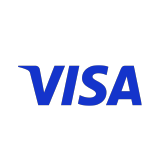
Visa
This globally recognized credit card enables secure and convenient payments both in-store and online. It is accepted by millions of merchants worldwide.
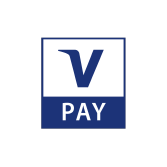
V PAY
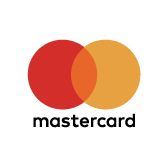
Mastercard
As one of the leading credit card brands, Mastercard is internationally recognized and enables flexible payments with various security features.
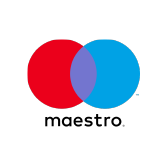
Maestro
This debit card from Mastercard allows for fast and direct debits from the current account and is widely used as a common means of payment in many countries.

ELV (Elektronisches
Lastschriftverfahren)

UnionPay
The largest Chinese credit card organization is also gaining increasing international significance, especially among Chinese travelers.
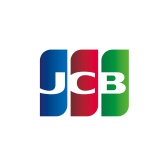
JCB (Japan Credit Bureau)
This Japanese credit card is particularly popular among tourists from Asia and is gaining increasing acceptance in Europe as well.
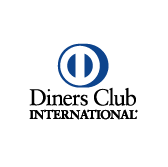
Diners Club
Known for its exclusive benefits, this credit card is aimed at frequent travelers and business professionals with high expectations.

Discover
Originally from the USA, this credit card is less common in Europe but is increasingly being integrated into international payment systems.

American Express (Amex)
In addition to global acceptance, Amex offers numerous added benefits such as insurance coverage and rewards programs, particularly appealing to frequent travelers.

Klarna
A payment service provider that has revolutionized online shopping with flexible options such as installment payments and purchase on account.

Paypal
With fast and secure online transactions, PayPal is one of the most popular digital payment methods worldwide.

Bluecode
This European payment app enables transactions via barcode scan and is directly linked to the user’s bank account.
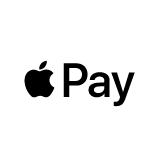
Apple Pay
Users of Apple devices can use this mobile payment service to pay quickly and securely, both contactlessly at checkout and online.
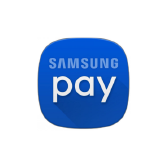
Samsung Pay
Equipped with NFC technology, Samsung Pay enables convenient and secure mobile payments via compatible devices.

Google Pay
Thanks to its connection to numerous bank cards, Google Pay enables easy and contactless payments via smartphone or smartwatch.

Alipay
Especially popular among Chinese customers, Alipay is considered the leading mobile payment system in China and is increasingly being accepted in Europe as well.

Twint
As Switzerland’s leading payment app, Twint enables both contactless payments and peer-to-peer transfers.
Card Payments:
Development, Trends, and Benefits
More and more consumers are choosing cards or smartphones over traditional cash. In recent years, card payments have evolved from a convenient alternative to the preferred method of payment – both in retail and e-commerce.
Record levels in card transactions
In 2024, Austria recorded more card payments than ever before. According to UniCredit Bank Austria, the number of transactions reached around 1.9 billion – representing a 13% increase compared to the previous year.
A large share of these payments is processed through the Bankomat® system by PSA. In 2024, around 1.8 billion transactions were recorded here – an increase of 13% compared to 2023. The area of digital payments is developing particularly dynamically. According to PSA, 420 million payments have already been made using digital card solutions such as Apple Pay, Google Pay, or smartwatches. In December 2024, this share even reached 29% of all transactions.
Contactless payments are becoming the norm
One of the most striking developments is the near-complete shift toward contactless payments. More than 90% of all card transactions are now contactless – whether via NFC-enabled bank cards or mobile devices. This technology stands out not only for its speed but also for its hygiene and user-friendliness.
Decline in cash payments – but not a complete farewell
Despite the growing importance of card payments, cash remains present – albeit with declining significance. According to a survey by the OeNB, 62% of point-of-sale payments in Austria were still made in cash in 2024. Compared to previous years, this marks a clear decline. Only 38% of consumers now state that they prefer to pay with cash – a figure that, while still above the EU average, is clearly on the decline.
Online payments and mobile payment on the rise
The digital transformation is evident not only in brick-and-mortar retail but also in online payment behavior. The share of online payments in daily transaction volume has increased significantly – from just 7% in 2019 to 28% in 2024. Younger target groups and digitally savvy consumers in particular are increasingly relying on flexible payment methods that are seamlessly integrated into online commerce.
The key advantages of card payments
Card payments offer numerous benefits for both customers and businesses. It is fast, convenient, and secure – both for everyday purchases and larger transactions. Eliminating cash increases efficiency at the checkout and reduces the risk of errors or theft. Hygiene considerations and the flexibility of mobile solutions are additional advantages that have become even more important since the pandemic.
Accepting card payments also offers advantages for businesses: it builds trust with customers, encourages impulse purchases, and simplifies accounting and cash management. Smaller businesses in particular, which previously accepted only cash, can tap into new target groups and position themselves for the future through modern payment solutions.
Current developments clearly show: Austria is steadily moving toward a cashless everyday life. The number of card payments increases every year, while the share of cash transactions continues to decline.
